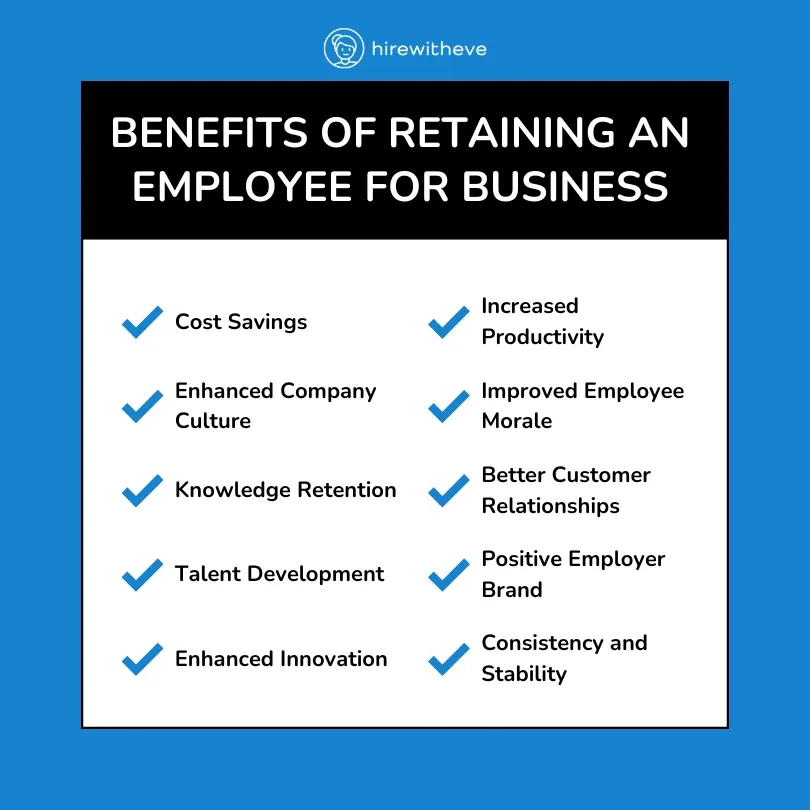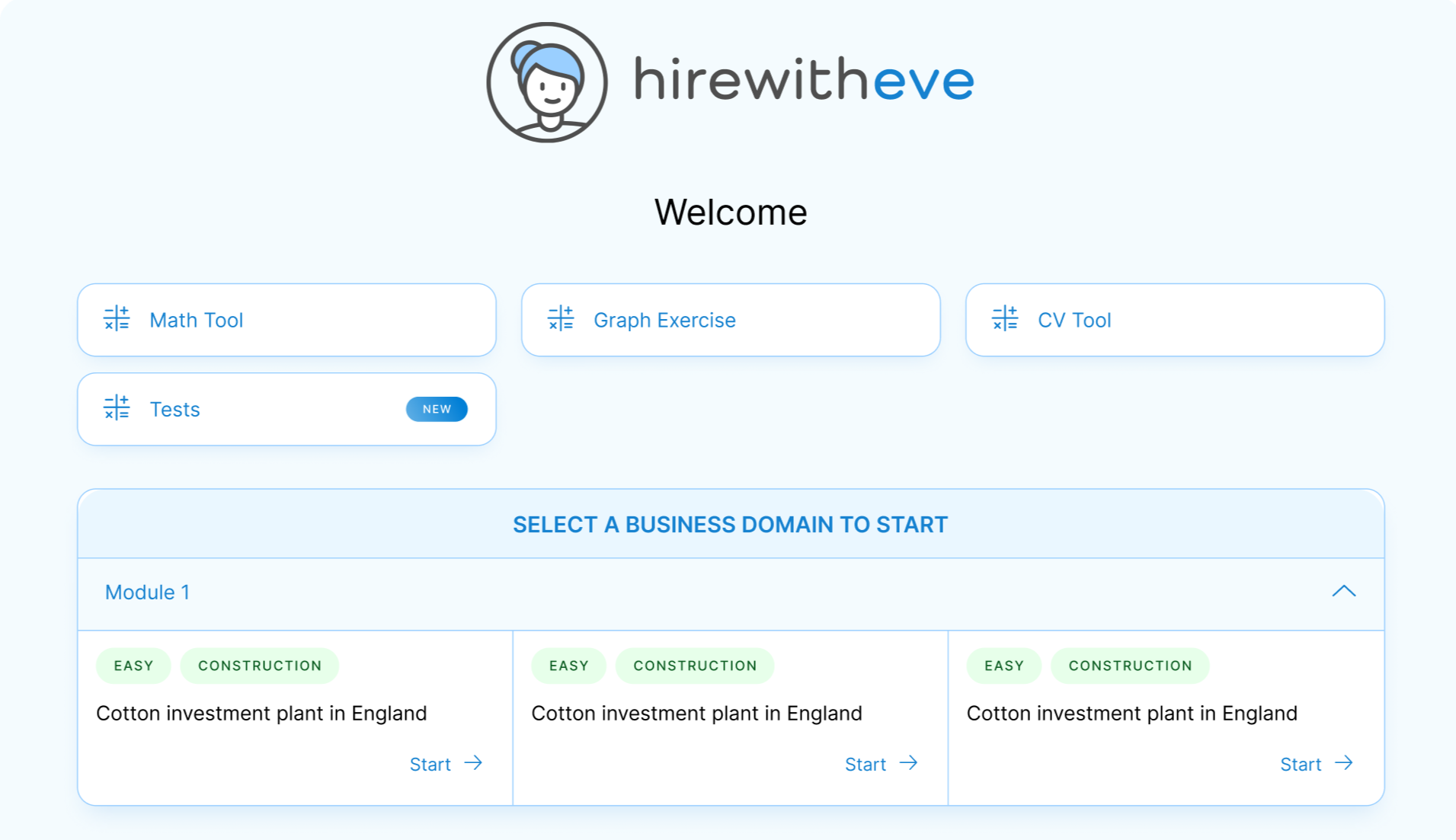10 Benefits of Employee Retention (And Why It's Important)

Imagine investing time and resources into training employees, only to watch them leave for a competitor shortly after.
This scenario is all too common in today’s business world, highlighting the critical importance of employee retention. High turnover rates not only disrupt productivity but also result in significant costs associated with recruitment and training new hires. By prioritizing employee retention, companies can unlock a wealth of benefits that contribute to a thriving workplace culture and improved business outcomes.
In this blog, we’ll explore ten key advantages of retaining employees and delve into why these strategies are essential for long-term success.
Table of contents
What Is Employee Retention? (With Example)
Employee retention refers to an organization’s ability to keep its employees and reduce turnover rates. It encompasses various strategies and practices designed to engage employees, enhance job satisfaction, and encourage them to stay with the company for an extended period.
A high employee retention rate typically indicates a positive work environment and effective management practices, while a low rate may suggest issues that need addressing, such as inadequate compensation, lack of growth opportunities, or poor workplace culture.
Here is an example of employee retention:
A tech company that implements a robust employee retention program might offer career development opportunities, flexible work arrangements, and regular feedback sessions. By doing so, they create a supportive environment where employees feel valued and motivated to stay long-term.
If this company maintains a retention rate of 90% over several years, it demonstrates effective employee engagement and satisfaction, contributing to its overall success and stability.
What Are the Benefits of Retaining an Employee For Business?
Here are some key benefits of retaining employees:

Cost Savings
Retaining employees saves money on recruitment, hiring, and training costs. Each new hire can be expensive due to advertising, interviewing, and onboarding processes. By keeping experienced employees, companies can avoid these expenses.
Increased Productivity
Long-term employees tend to be more productive as they have a deeper understanding of the company’s processes, culture, and expectations. Their experience allows them to work more efficiently, leading to higher overall productivity.
Enhanced Company Culture
A stable workforce contributes to a positive company culture. When employees stay longer, they develop stronger relationships with colleagues, which fosters collaboration and teamwork.
Improved Employee Morale
High retention rates can boost morale among employees. Knowing that the company values and invests in its staff can create a sense of loyalty and commitment, leading to higher engagement levels.
Knowledge Retention
Experienced employees hold valuable institutional knowledge that is crucial for maintaining operational continuity. When they leave, this knowledge can be lost, negatively impacting the organization.
Better Customer Relationships
Employees who have been with the company longer often build stronger relationships with customers. This continuity can lead to better customer service and satisfaction, which can ultimately drive business success.
Talent Development
Retaining employees allows companies to invest in their development and growth. Providing training and advancement opportunities encourages loyalty and can help create future leaders within the organization.
Positive Employer Brand
Companies with high retention rates are often viewed more favorably by job seekers. A positive reputation can attract top talent who are looking for stable and supportive work environments.
Enhanced Innovation
Long-term employees who understand the company’s vision and goals may contribute to innovation by bringing unique insights and ideas that can help drive the business forward.
Consistency and Stability
A stable workforce leads to consistent service delivery and a clear organizational vision. This stability can enhance overall business performance and customer satisfaction.
Why Retaining an Employee Is Better than Hiring a Replacement?
Here are some key reasons why retaining employees is often better than hiring replacements:
Cost Efficiency
Recruiting and onboarding new employees can be expensive. Costs include advertising job openings, conducting interviews, background checks, and training new hires. Retaining existing employees eliminates these costs, leading to significant savings for the organization.
Time Savings
The hiring process can be lengthy, often taking weeks or even months to find the right candidate. In contrast, retaining existing employees allows organizations to maintain productivity without the disruption of hiring and onboarding.
Preservation of Knowledge and Skills
Long-term employees possess valuable institutional knowledge and skills that are vital for maintaining operational continuity. When they leave, this knowledge can be lost, negatively impacting the organization. Retaining employees helps preserve this expertise.
Enhanced Morale and Engagement
High turnover rates can harm employee morale. When employees see their colleagues leaving frequently, it can lead to feelings of instability and insecurity. Retaining employees fosters a sense of belonging and loyalty, leading to higher engagement levels.
Stronger Team Dynamics
Long-term employees often have established relationships and understand team dynamics. This familiarity promotes collaboration and teamwork, which can enhance overall performance. New hires may take time to integrate into the team.
Improved Customer Relationships
Employees who stay longer tend to build stronger relationships with customers. This continuity can lead to better customer service and satisfaction, which can drive business success.
Opportunities for Development
Retaining employees allows organizations to invest in their development and growth. Offering training and advancement opportunities encourages loyalty and can help create future leaders within the organization.
Positive Company Culture
A stable workforce contributes to a positive company culture. Employees are more likely to feel valued and engaged when they see their colleagues staying long-term, fostering a sense of community.
Conclusion
Prioritizing employee retention offers a multitude of benefits that significantly impact an organization’s success, from cost savings to enhanced team dynamics and improved customer relationships.
At HirewithEve, we understand that effective hiring is just the beginning; it’s essential to build a workplace culture that values and retains talent. Our innovative hiring assessment platform not only helps you find the right candidates but also equips your organization with insights to foster an environment that keeps employees engaged and satisfied.
By leveraging our tools, you can create a robust retention strategy that ensures your top talent remains committed to your company’s vision, ultimately driving sustainable growth and success.
Target Your Talent
Unlock tailored solutions for your recruitment and hiring needs with Eve Platform's extensive case study library.
Subscribe now to enhance your HR expertise and excel in your role.
Free Resources

Transforming Hiring: 7 Key Recruiting Metrics
Enhancing recruitment processes with data-driven insights for better hiring outcomes.

Reducing Hiring Bias with Hirewitheve.
Utilizing Hirewitheve to combat bias and streamline recruitment processes effectively.

Hiring Detail-Oriented Candidates
HirewithEve enhances hiring by accurately assessing candidate's attention to detail-oriented.








